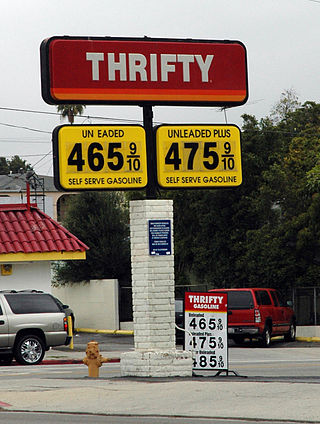
Persuasion or persuasion arts is an umbrella term for influence. Persuasion can influence a person's beliefs, attitudes, intentions, motivations, or behaviours.
Social psychology is the scientific study of how thoughts, feelings, and behaviors are influenced by the actual, imagined, or implied presence of others. Social psychologists typically explain human behavior as a result of the relationship between mental states and social situations, studying the social conditions under which thoughts, feelings, and behaviors occur, and how these variables influence social interactions.

A cognitive bias is a systematic pattern of deviation from norm or rationality in judgment. Individuals create their own "subjective reality" from their perception of the input. An individual's construction of reality, not the objective input, may dictate their behavior in the world. Thus, cognitive biases may sometimes lead to perceptual distortion, inaccurate judgment, illogical interpretation, and irrationality.
A heuristic, or heuristic technique, is any approach to problem solving or self-discovery that employs a practical method that is not guaranteed to be optimal, perfect, or rational, but is nevertheless sufficient for reaching an immediate, short-term goal or approximation. Where finding an optimal solution is impossible or impractical, heuristic methods can be used to speed up the process of finding a satisfactory solution. Heuristics can be mental shortcuts that ease the cognitive load of making a decision.

Psychological pricing is a pricing and marketing strategy based on the theory that certain prices have a psychological impact. In this pricing method, retail prices are often expressed as just-below numbers: numbers that are just a little less than a round number, e.g. $19.99 or £2.98. There is evidence that consumers tend to perceive just-below prices as being lower than they actually are, tending to round to the next lowest monetary unit. Thus, prices such as $1.99 may to some degree be associated with spending $1 rather than $2. The theory that drives this is that pricing practices such as this cause greater demand than if consumers were perfectly rational. Psychological pricing is one cause of price points.
The availability heuristic, also known as availability bias, is a mental shortcut that relies on immediate examples that come to a given person's mind when evaluating a specific topic, concept, method, or decision. This heuristic, operating on the notion that, if something can be recalled, it must be important, or at least more important than alternative solutions not as readily recalled, is inherently biased toward recently acquired information.
The representativeness heuristic is used when making judgments about the probability of an event being representional in character and essence of known prototypical event. It is one of a group of heuristics proposed by psychologists Amos Tversky and Daniel Kahneman in the early 1970s as "the degree to which [an event] (i) is similar in essential characteristics to its parent population, and (ii) reflects the salient features of the process by which it is generated". The representativeness heuristic works by comparing an event to a prototype or stereotype that we already have in mind. For example, if we see a person who is dressed in eccentric clothes and reading a poetry book, we might be more likely to think that they are a poet than an accountant. This is because the person's appearance and behavior are more representative of the stereotype of a poet than an accountant.
The anchoring effect is a psychological phenomenon in which an individual's judgements or decisions are influenced by a reference point or "anchor" which can be completely irrelevant. Both numeric and non-numeric anchoring have been reported in research. In numeric anchoring, once the value of the anchor is set, subsequent arguments, estimates, etc. made by an individual may change from what they would have otherwise been without the anchor. For example, an individual may be more likely to purchase a car if it is placed alongside a more expensive model. Prices discussed in negotiations that are lower than the anchor may seem reasonable, perhaps even cheap to the buyer, even if said prices are still relatively higher than the actual market value of the car. Another example may be when estimating the orbit of Mars, one might start with the Earth's orbit and then adjust upward until they reach a value that seems reasonable.

The simulation heuristic is a psychological heuristic, or simplified mental strategy, according to which people determine the likelihood of an event based on how easy it is to picture the event mentally. Partially as a result, people experience more regret over outcomes that are easier to imagine, such as "near misses". The simulation heuristic was first theorized by psychologists Daniel Kahneman and Amos Tversky as a specialized adaptation of the availability heuristic to explain counterfactual thinking and regret. However, it is not the same as the availability heuristic. Specifically the simulation heuristic is defined as "how perceivers tend to substitute normal antecedent events for exceptional ones in psychologically 'undoing' this specific outcome."
The affect heuristic is a heuristic, a mental shortcut that allows people to make decisions and solve problems quickly and efficiently, in which current emotion—fear, pleasure, surprise, etc.—influences decisions. In other words, it is a type of heuristic in which emotional response, or "affect" in psychological terms, plays a lead role. It is a subconscious process that shortens the decision-making process and allows people to function without having to complete an extensive search for information. It is shorter in duration than a mood, occurring rapidly and involuntarily in response to a stimulus. Reading the words "lung cancer" usually generates an affect of dread, while reading the words "mother's love" usually generates a feeling of affection and comfort. The affect heuristic is typically used while judging the risks and benefits of something, depending on the positive or negative feelings that people associate with a stimulus. It is the equivalent of "going with your gut". If their feelings towards an activity are positive, then people are more likely to judge the risks as low and the benefits high. On the other hand, if their feelings towards an activity are negative, they are more likely to perceive the risks as high and benefits low.
Salience is that property by which some thing stands out. Salient events are an attentional mechanism by which organisms learn and survive; those organisms can focus their limited perceptual and cognitive resources on the pertinent subset of the sensory data available to them.
In psychology, a heuristic is an easy-to-compute procedure or rule of thumb that people use when forming beliefs, judgments or decisions. The familiarity heuristic was developed based on the discovery of the availability heuristic by psychologists Amos Tversky and Daniel Kahneman; it happens when the familiar is favored over novel places, people, or things. The familiarity heuristic can be applied to various situations that individuals experience in day-to-day life. When these situations appear similar to previous situations, especially if the individuals are experiencing a high cognitive load, they may regress to the state of mind in which they have felt or behaved before. This heuristic is useful in most situations and can be applied to many fields of knowledge; however, there are both positives and negatives to this heuristic as well.
In psychology, the human mind is considered to be a cognitive miser due to the tendency of humans to think and solve problems in simpler and less effortful ways rather than in more sophisticated and effortful ways, regardless of intelligence. Just as a miser seeks to avoid spending money, the human mind often seeks to avoid spending cognitive effort. The cognitive miser theory is an umbrella theory of cognition that brings together previous research on heuristics and attributional biases to explain when and why people are cognitive misers.
Heuristics is the process by which humans use mental shortcuts to arrive at decisions. Heuristics are simple strategies that humans, animals, organizations, and even machines use to quickly form judgments, make decisions, and find solutions to complex problems. Often this involves focusing on the most relevant aspects of a problem or situation to formulate a solution. While heuristic processes are used to find the answers and solutions that are most likely to work or be correct, they are not always right or the most accurate. Judgments and decisions based on heuristics are simply good enough to satisfy a pressing need in situations of uncertainty, where information is incomplete. In that sense they can differ from answers given by logic and probability.
The heuristic-systematic model of information processing (HSM) is a widely recognized model by Shelly Chaiken that attempts to explain how people receive and process persuasive messages. The model states that individuals can process messages in one of two ways: heuristically or systematically. Whereas systematic processing entails careful and deliberative processing of a message, heuristic processing entails the use of simplifying decision rules or ‘heuristics’ to quickly assess the message content. The guiding belief with this model is that individuals are more apt to minimize their use of cognitive resources, thus affecting the intake and processing of messages. HSM predicts that processing type will influence the extent to which a person is persuaded or exhibits lasting attitude change. HSM is quite similar to the elaboration likelihood model, or ELM. Both models were predominantly developed in the early to mid-1980s and share many of the same concepts and ideas.
The rhyme-as-reason effect, or Eaton–Rosen phenomenon, is a cognitive bias whereupon a saying or aphorism is judged as more accurate or truthful when it is rewritten to rhyme.
Social heuristics are simple decision making strategies that guide people's behavior and decisions in the social environment when time, information, or cognitive resources are scarce. Social environments tend to be characterised by complexity and uncertainty, and in order to simplify the decision-making process, people may use heuristics, which are decision making strategies that involve ignoring some information or relying on simple rules of thumb.
In behavioural sciences, social rationality is a type of decision strategy used in social contexts, in which a set of simple rules is applied in complex and uncertain situations.
Tunnel vision metaphorically denotes a collection of common heuristics and logical fallacies that lead individuals to focus on cues that are consistent with their opinion and filter out cues that are inconsistent with their viewpoint. It is a phenomenon mostly widely observed and researched in the field of criminology due to its prevalence and dangerous potential to create incorrect convictions. Tunnel vision is also related to confirmation bias. Confirmation bias is over-reliance on external sources that may be inaccurate yet supports an individual’s opinion, whereas tunnel vision is over-reliance on internal information whilst ignoring correct external information.






